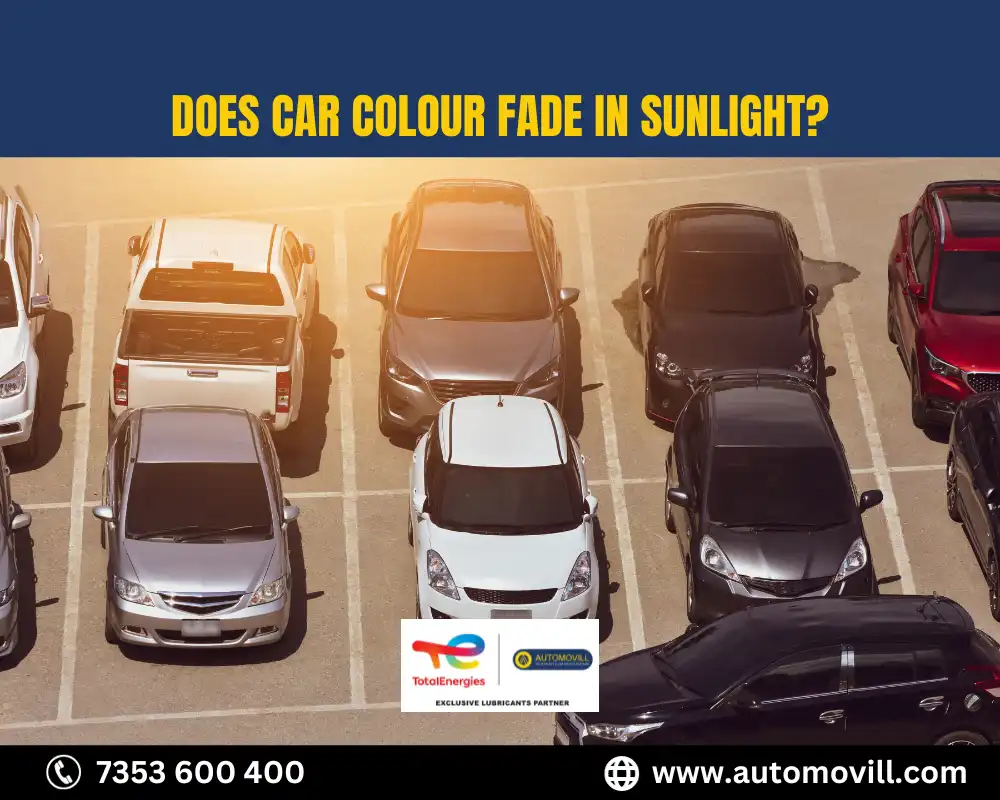
When it comes to our cars, we invest a significant amount of time and money in maintaining their appearance. We wash, wax, and polish them regularly to keep them looking brand new.
But there’s one common concern that many car owners share: Does the color of my car fade in sunlight?
In this blog, we’ll explore the causes behind car color fading and some practical tips to protect your car’s vibrant hue.
Scientific Causes For Colour Fading
To answer the question, let’s first understand why car colors fade in sunlight. Car paint is a combination of pigments and binders.
The pigments provide color, while the binders hold them together and adhere to the car’s surface. When exposed to sunlight, several factors can contribute to color fading:
- Ultraviolet (UV) Radiation: The sun emits UV radiation, which can break down the chemical bonds in pigments and binders. This process, known as photodegradation, can lead to color fading over time.
- Oxidation: Oxygen in the air can react with the binders in paint, causing them to break down and lose their ability to hold pigments in place.
- Heat: High temperatures can accelerate the chemical reactions that cause fading. In extreme cases, the heat can cause the paint to blister or crack, leading to further color loss.
- Environmental Factors: Pollution, dust, and other environmental factors can settle on your car’s surface and create a layer that can magnify the effects of UV radiation and heat, speeding up color fading.
Car Color Fading Myths

Now that we understand the science behind color fading let’s debunk some common myths:
Myth 1: Only Dark Colors Fade: All car colors are susceptible to fading. While it’s true that dark colors may show fading more prominently, lighter colors can also experience a loss of vibrancy.
Myth 2: Indoor Parking Prevents Fading Completely: Indoor parking can help protect your car from direct sunlight and reduce the rate of fading. However, indoor environments may still contain UV radiation, and other factors like heat and oxidation can still affect your car’s paint.
Myth 3: Regular Waxing Prevents Fading: While waxing can provide a protective layer and enhance your car’s shine, it won’t completely prevent fading. Wax primarily guards against surface contaminants and minor UV damage but doesn’t offer long-term protection.
Tips to Prevent Car Color Fading
Now that we’ve debunked some myths, here are practical tips to minimize color fading:
- Park in Shade: Whenever possible, park your car in a shaded area or use a car cover to shield it from direct sunlight.
- Regular Wash and Wax: Keep your car clean and apply wax regularly to create a protective barrier against UV radiation and environmental contaminants.
- Protective Coatings: Consider investing in ceramic or clear protective coatings that offer enhanced UV resistance and durability.
- Garage Storage: If you have access to a garage, store your car indoors to shield it from the elements.
- UV-Blocking Window Tints: Installing window tints can reduce the amount of UV radiation that enters your car’s interior, which can also help protect the interior from fading.
Conclusion
While car color fading is an inevitable process due to exposure to sunlight and other environmental factors, you can take steps to slow it down significantly.
By understanding the causes behind fading and implementing protective measures, you can keep your car looking vibrant and attractive for years to come.
Remember, proper care and maintenance are key to preserving your car’s color and overall appearance.
